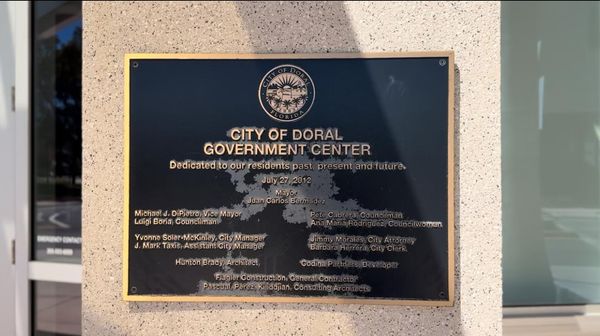Money Saving Expert's (MSE) latest advice has issued several warnings and reminders to people about claiming benefits and other cash boots amid the cost of living crisis.
And in their first helpful guide of this year, the experts have warned that people need to check their tax code.
It comes as they have also warned that people need to check that they are in the right tax band for their respective council with many people thought to be overpaying.
READ MORE: Prince Harry was 'physically attacked' during confrontation with William
So what number do you need to look out for and how can you make sure you're not being underpaid? here's what you need to know.
What is a tax code and what number do I need to look out for?
You need to be looking out for a short number such as 1257L. This number tells your employer how much tax to take from you.
How to find your tax code
For each job, and income, that you have, you will find a different tax code. You can find this on your payslip but if not, ask your employer where you can get this.
You can check your tax code with HMRC online.
What do the numbers on my tax code mean?
Tax codes will vary for each person, MSE explain: "You need to add a zero to get the real number, so 1257 means you can earn £12,570 a year tax-free – that's the amount you can earn in a year before your employer needs to deduct tax. This is called your personal allowance."
How to check if you're being underpaid and paying too much tax
Millions of tax codes are said to be incorrect each year. However, whilst you may think the double checking will be done for you, MSE say that it is in fact your own responsibility to check and not your employers or HM Revenue & Customs (HMRC)
To check if you are paying the correct amount, you can visit MSE's Tax Code Calculator to check if yours is likely right or wrong.
What if I'm underpaid?
If your tax code is wrong. you should contact HMRC straight away and tell them why you think it is wrong.
You can call them on 0300 200 3300 or online via your personal tax account. To access this, you'll need to log in - or set up - an account using your Government Gateway or Gov.uk Verify ID.
What the letters on your tax code mean
According to MSE, they mean the following:
| L | You're entitled to a tax-free personal allowance. For those earning under £100,000 with no taxable perks (such as a company car) this should be £12,570 for 2022/23. |
|
0T (or S0T or C0T) |
You're not entitled to any tax-free personal allowance and all income is taxed in line with income tax bands. It's often a code you're put on when your employer doesn't have enough information about your previous employment, or you earn more than £125,140. |
|
BR (or SBR or CBR) |
You're not entitled to any tax-free personal allowance on income from this job or pension and pay 20% basic-rate tax on the whole amount. This is often used for a second job or pension, as it assumes your personal allowance is used on your main income. It's important to ensure HM Revenue & Customs (HMRC) knows which is your MAIN job (generally the one that pays you most) as if it's the wrong way round, it can cause problems. |
|
D0 (or SD0 or CD0) |
You're not entitled to any tax-free personal allowance and all income is taxed at the 40% higher rate (21% intermediate rate in Scotland). This is often used for a second job or pension. |
|
D1 (or SD1 or CD1) |
You're not entitled to any tax-free personal allowance and all income is taxed at the 45% additional rate (41% higher rate in Scotland). This is often used for a second job or pension. |
| SD2 | This is only used in Scotland and shows you're not entitled to any tax-free personal allowance and all income is taxed at the 46% Scottish top rate. Again, it's often used for a second job or pension. |
| K | Your personal allowance has been eroded down to LESS than nothing, meaning the number after the K is actually a negative personal allowance. This can happen if you have income that isn't being taxed another way and is worth more than your personal allowance, such as paying back tax from a previous year, or getting work benefits that you have to pay tax on (and they're worth more than, or you're not entitled to, your personal allowance). |
| M or N | You'll have this at the end of your tax code if you or your spouse/civil partner have received (M) or given (N) the marriage tax allowance. This allows non-taxpayers to transfer £1,260 of their personal allowance to their basic-rate tax-paying spouse or civil partner. Full help in Marriage tax allowance. |
| NT | No tax is paid on this employment or pension income. |
| T | If a T follows a number that isn't zero, it means you do get a personal allowance, which is dictated by that number. However, it also means your tax affairs need to be reviewed by HMRC, which typically happens if they're complex. |
| Emergency tax codes | |
| W1, M1 or X | These may come after a normal looking tax code, for example 1257L W1. Typically this happens if there's a delay in HMRC receiving details about a change in your circumstances, for example if you've just started a new job. |
READ NEXT:
Prince Harry's ITV 'The Interview' release date and what to expect
McDonald's menu shake up as new wrap launches and fan favourites return
Argos shoppers hail £9 blanket helping keep heating off amid soaring bills
New Scottish discount scheme urges seven priority groups to buy first home - are you eligible?
Prince Harry 'Spare' release date and all you need to know about the book







